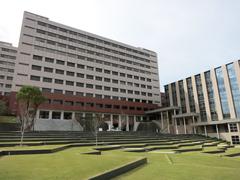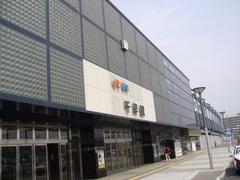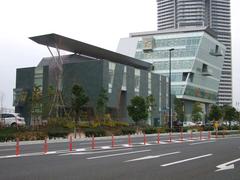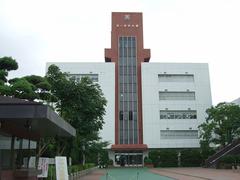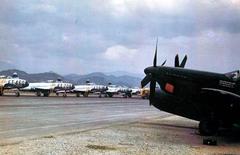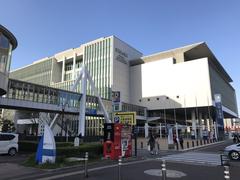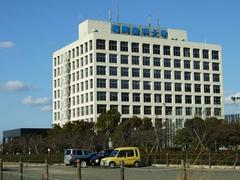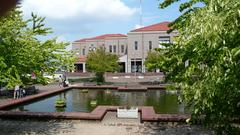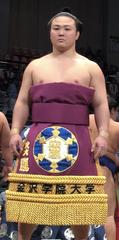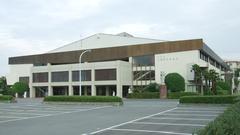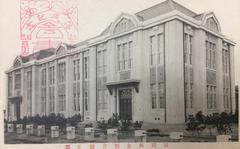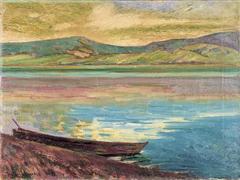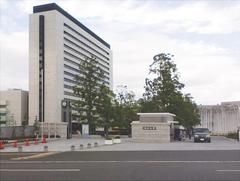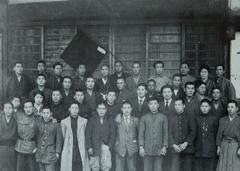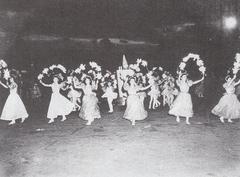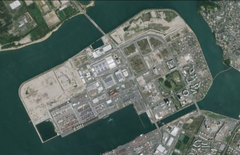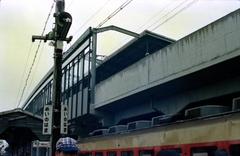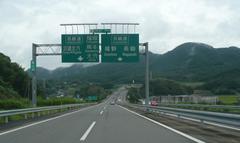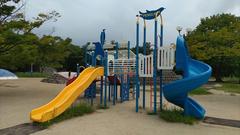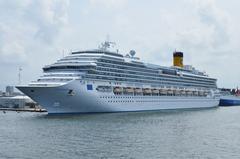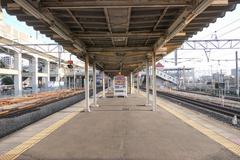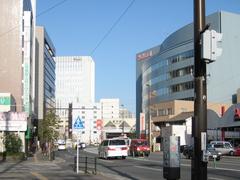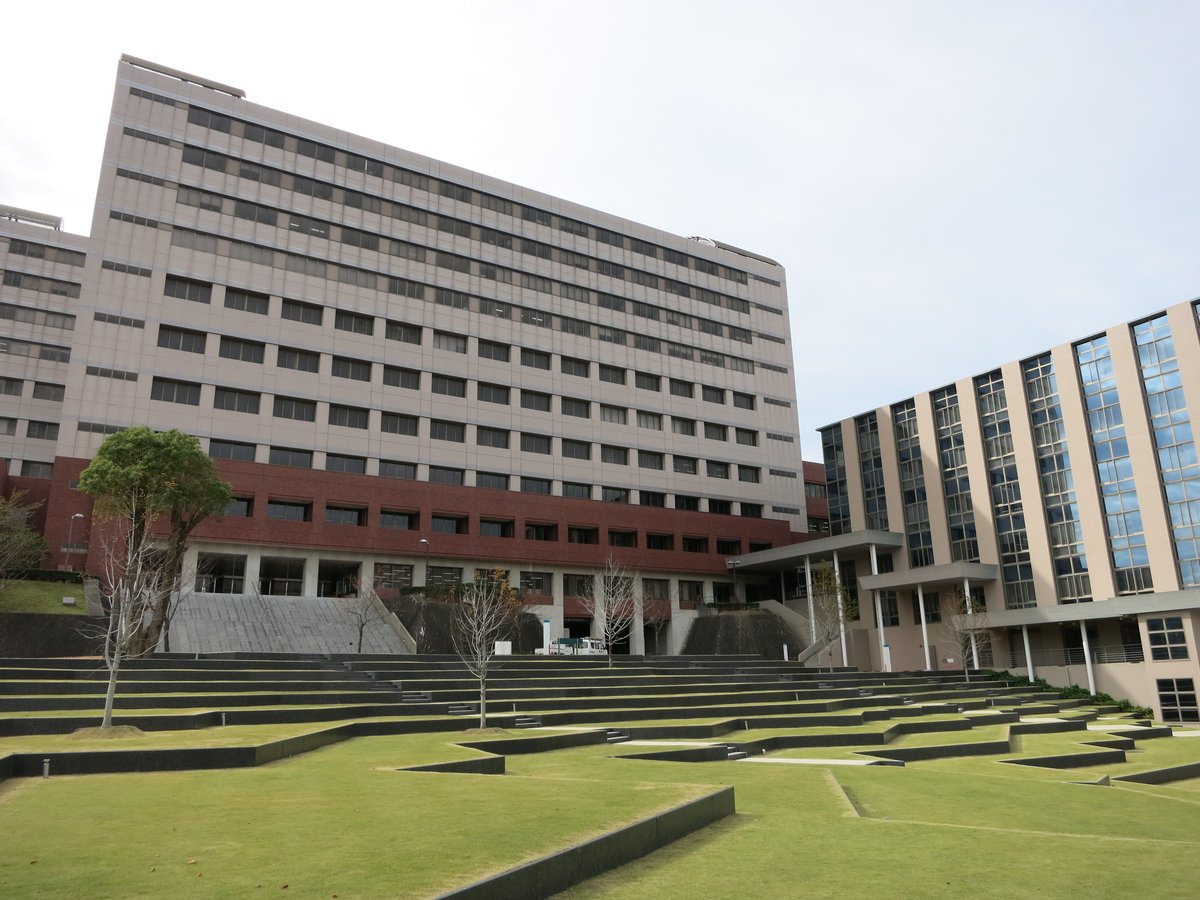
Kyushu Sangyo University Visiting Guide: Fukuoka Historical Site Information
Date: 14/06/2025
Introduction
Kyushu Sangyo University (KSU), based in the energetic city of Fukuoka, Japan, stands as an emblem of educational innovation and cultural heritage. Established in 1960, the university has developed into a hub where academic excellence merges with regional tradition and international collaboration (KSU Official; Stanford FSI). The campus is not only a center for learning but also a cultural landmark, featuring modern architecture, curated art spaces, and lush green landscapes (World Architects). Visitors to KSU are invited to engage with both its academic environment and its living history, particularly during the annual 香椎祭 (Kashii-sai) festival each November, which celebrates community and tradition (Wikipedia JP).
Located near several significant historical and cultural sites, KSU offers a comprehensive visitor experience. The Kyushu Sangyo University Monument, the ancient Ishigahara Tumulus Monument, and the evocative Fukuoka Castle Ruins enrich the tapestry of Fukuoka’s heritage. This guide provides all the essential details for planning your visit—from hours and access to travel tips and highlights—ensuring you can make the most of your time exploring this remarkable academic and cultural landscape.
Contents
- Introduction
- Founding and Early Development
- Educational Philosophy and Societal Role
- Campus and Visitor Information
- Visiting Hours and Tickets
- Accessibility and Travel Tips
- Campus Highlights
- Industry-Academia Collaboration and Innovation
- Nearby Attractions and Fukuoka Historical Sites
- International Recognition and Partnerships
- FAQ: Visiting Kyushu Sangyo University
- Kyushu Sangyo University Monument Overview
- Visiting the Ishigahara Tumulus Monument
- Visiting Fukuoka Castle Ruins
- Summary and Visitor Tips
- Sources
Founding and Early Development
Founded in 1960, Kyushu Sangyo University (九州産業大学, Kyūshū Sangyō Daigaku) was established with the guiding principle of integrating industry and academia (“産学一如,” sangaku ichinyo). This approach was pioneering in post-war Japan, aiming to produce graduates with practical skills and theoretical knowledge to support national development (KSU Official; Stanford FSI). Over the decades, KSU has expanded its faculties, research institutes, and international partnerships, continually adapting to the needs of society and industry.
Educational Philosophy and Societal Role
KSU’s educational philosophy centers on cultivating independent thinkers and responsible citizens, guided by the “spirit of the middle path.” The university’s motto, “Shape your dreams. Shape your future,” reflects its commitment to nurturing creative, adaptable, and socially engaged graduates (Edarabia). Through a curriculum that balances rigorous academics with hands-on experience, KSU plays a vital role in regional and national development.
Campus and Visitor Information
Visiting Hours and Tickets
- General Campus Access: Weekdays, 9:00 AM–5:00 PM.
- Admission: Free (Some exhibitions or events may require tickets. Check KSU Official).
- Events: Special events like the annual Kashii-sai festival offer unique campus experiences.
Accessibility and Travel Tips
- Access: The campus is accessible via Kashii Station (JR lines) and local bus services. Shuttle buses operate during major events.
- Facilities: The campus is fully equipped with ramps, elevators, and accessible restrooms for visitors with disabilities.
- Travel Advice: Use public transportation as parking is limited during peak times. English signage is available throughout the campus.
Campus Highlights
- Architecture and Green Spaces: Modern buildings designed by acclaimed local architects blend seamlessly with landscaped gardens (World Architects).
- Art Galleries and Libraries: The university hosts several public galleries and a library featuring exhibitions and community programs.
- Kashii-sai Festival: Held each November, this festival features student performances, cultural exhibits, and local food stalls (Wikipedia JP).
Industry-Academia Collaboration and Innovation
KSU’s robust industry partnerships with companies such as Hitachi and Olympus drive forward research and practical training initiatives (Wikipedia JP). Notable projects include advancements in broadcasting technology and regional development. The university’s research centers support innovation and entrepreneurship, offering students and visitors opportunities to experience cutting-edge technology.
Nearby Attractions and Fukuoka Historical Sites
Fukuoka’s heritage is easily explored from KSU. Notable nearby sites include:
- Dazaifu Tenmangu Shrine: A renowned Shinto shrine.
- Fukuoka Castle Ruins: Historic remains set in scenic Maizuru Park.
- Ohori Park: A tranquil urban park perfect for relaxation and seasonal events.
These sites are accessible by public transport and offer a deeper understanding of Kyushu’s cultural landscape (Visit Kyushu).
International Recognition and Partnerships
KSU’s collaborative programs, such as the Stanford e-KyuSan-U initiative, underscore its international outlook and focus on diversity, sustainability, and entrepreneurship (Stanford FSI). These partnerships enrich the university community and provide global perspectives to visitors and students alike.
FAQ: Visiting Kyushu Sangyo University
-
Is there an entrance fee?
No, campus entry is free. Special exhibitions may require tickets. -
What are the visiting hours?
9:00 AM–5:00 PM on weekdays. Check the official website for individual facility hours. -
Is the campus wheelchair accessible?
Yes, accessible facilities are available throughout campus. -
How do I get to KSU?
Take the JR line to Kashii Station, then use the shuttle or local buses. -
When is the best time to visit?
November for Kashii-sai festival, or spring/autumn for seasonal beauty.
Kyushu Sangyo University Monument Overview
Historical Background and Significance
The Kyushu Sangyo University Monument, located at the main campus entrance, commemorates the university’s founding and its mission of knowledge exchange and global engagement. Its blend of traditional and modern design elements embodies KSU’s respect for heritage and its forward-looking philosophy.
Location and Accessibility
- Address: 3-1 Matsukadai 2-chome, Higashi-ku, Fukuoka, 813-8503, Japan
- Getting There: Accessible via JR Kashii Station, Fukuoka Airport, and Hakata Port.
- Accessibility: Ramps, pathways, and parking for visitors with disabilities are available.
Visiting Hours and Tickets
- Hours: Daily, 8:00 AM–6:00 PM
- Admission: Free
- Guided Tours: Arrange in advance via the university visitor center.
Nearby Points of Interest
- KSU Library: Renowned for its architecture and public exhibitions.
- Local Shopping Streets: Sample Fukuoka’s cuisine and crafts.
- Fukuoka City Center: Explore additional historical landmarks.
Visitor Tips
- Wear comfortable shoes for campus exploration.
- Photography is permitted in most outdoor areas.
- Check for special events or tours via the KSU website.
Visiting the Ishigahara Tumulus Monument
Introduction and Cultural Significance
The Ishigahara Tumulus Monument, near KSU in Higashi Ward, is an ancient burial mound from the Kofun period, providing insight into Japan’s early social structures and funerary practices. The well-preserved stone chamber and passageway are central attractions for history enthusiasts and casual visitors alike.
Visiting Details
- Hours: 9:00 AM–5:00 PM daily
- Admission: Free (Guided tours require reservation)
- Tours: Offered on weekends and holidays, twice daily. English support available—reserve through the official Fukuoka City cultural heritage site.
Access
- Nearest Station: Nishitetsu Kaizuka Station (Nishitetsu Kaizuka Line & Fukuoka City Subway Hakozaki Line)
- From Hakata Station: 20–30 minutes by subway/train
- Parking: Limited; public transportation recommended
Amenities & Accessibility
- Wheelchair accessible paths and restrooms
- Nearby university cafeterias and convenience stores
- Free Wi-Fi in public areas
Etiquette and Safety
- Be respectful in sacred and archaeological areas.
- Follow staff instructions and check seasonal health advisories.
Seasonal Highlights
- Cherry Blossoms (late March–early April): Stunning views around the monument.
- Autumn Foliage (October–November): Photogenic landscapes.
- Events: Check the event calendar for cultural demonstrations and open days.
FAQ
- Is entry free? Yes.
- Are guided tours in English? Available on request.
- Is the site accessible? Yes, with ramps and signage.
Contact
- Email: [email protected]
- Info: Fukuoka City Cultural Heritage
Visiting Fukuoka Castle Ruins: Hours, Tickets & Historical Insights
Overview
Fukuoka Castle Ruins are located within Maizuru Park and represent the historical heart of Fukuoka. Built in the 17th century by Kuroda Nagamasa, the ruins offer visitors a glimpse into the region’s feudal architecture and history (Matcha-JP).
Visitor Information
- Hours: Open year-round, dawn to dusk
- Admission: Free
- Accessibility: Most paths are paved; some areas have stone steps.
- Guided Tours: Available via local operators (GoFukuoka).
Access
- Subway: Akasaka Station (Kuko Line), 10-min walk to the park
- Bus: From Hakata Station to Maizuru Park
- Bicycle Rentals: Popular for park exploration
Highlights
- Stone Walls & Turrets: Iconic, especially during cherry blossom season
- Fukuoka Castle Museum: Exhibits on history and artifacts
- Panoramic Views: Overlooking Fukuoka City and Hakata Bay
Special Events
- Cherry Blossom Festival: March–April
- Historical Reenactments: Periodically scheduled events
FAQ
- Is the site family-friendly? Yes.
- Are tours available? Yes, book in advance.
- Best time to visit? Spring and autumn for scenery.
Summary and Visitor Tips
Kyushu Sangyo University and its neighboring landmarks—Kyushu Sangyo University Monument, Ishigahara Tumulus Monument, and Fukuoka Castle Ruins—offer a unique blend of academic innovation and historical immersion. Visitors can experience Japan’s journey from ancient times to modernity, all within a conveniently accessible part of Fukuoka. Plan your trip to coincide with seasonal festivals or natural highlights, and make use of available amenities and guided tours for a richer experience.
Stay updated by downloading the Audiala app and following related content for exclusive tips and audio guides. Enjoy the vibrant intersection of education, culture, and history on your next visit to Fukuoka.
Sources
- KSU Official
- Stanford FSI
- World Architects
- Wikipedia JP
- Fukuoka City Cultural Heritage
- Matcha-JP
- GoFukuoka
